This blog is a continuation from my last blog post “My Kona Journey: Part 7”. I would suggest reading that blog before reading this one.
“The hardest skill to acquire in this sport is the one where you compete all out, give it all you have, and you are still getting beat no matter what you do. When you have the killer instinct to fight through that, it is very special.”
– Eddie Reese, U.S. Olympic Swimming coach
I woke up before my alarm went off at 3:30am. I was only able to get a few hours of good sleep since my body was so amped up for what was about to happen today. This was the morning I’ve been imaging and waiting for for years. After putting on my race kit I had my usual breakfast of oats with protein powder because it settled well with my stomach. After eating, my family and I left our condo around 4am and started the 30 min drive to the race transition area.
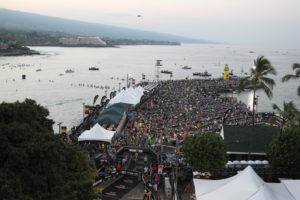 At 4:30am we arrived at the transition area where my aunt and I were dropped off. The athlete swim check-in opened at 4:45am so I got there a little early to beat the big crowds. In addition, I wanted to see the Pro Men and Women check-in. When we got to check-in there was already a long line so we weren’t able to see the Pros. While waiting in line I dropped off my special needs bags for the bike and run. When I was about to enter into the swim check-in area I gave my Aunt a hug as she wished me good luck for my race.
At 4:30am we arrived at the transition area where my aunt and I were dropped off. The athlete swim check-in opened at 4:45am so I got there a little early to beat the big crowds. In addition, I wanted to see the Pro Men and Women check-in. When we got to check-in there was already a long line so we weren’t able to see the Pros. While waiting in line I dropped off my special needs bags for the bike and run. When I was about to enter into the swim check-in area I gave my Aunt a hug as she wished me good luck for my race.
The check-in process went very smooth. There were more volunteers than athletes which is rare to see. The process went very quick and volunteers were very enthusiastic. The volunteers applied my race number tattoos. After we got our race number we had to step on a scale to record our pre-race weight. Finally we walked across the timing mate to verify that our chip was working and check-in was complete.
After check-in I walked over to my bike to get everything setup. I placed four bottles of Infinit on my bike and filled up my aero bottle. I pre-clipped my shoes in the pedals and pumped up the tires. After double (and triple) checking my setup, I was done in transition. I went into the Kualia Bay Hotel to meet up with my dad. I entered the hotel and saw a few pro triathletes, like Mirinda Carfrae (3-time Ironman World Champ), another reminder that the best of the best were here this morning. I sat in the hotel for about 30 minutes to rest the legs and take in some more fluids and nutrition. I also put on my swim speed suit, and went back into the transition area with less than a hour to go until my race.
When I got back into transition I checked on my bike setup and get some sunscreen on. By this point the transition area was packed like a can of sardines, including big name pros like Sabian Kienle, Jan Fordino, and Timothy O’Donnell. With 20 mins before my swim start at 7:05am, I was ready. The Pro men and women already started their race, so I made my way over to the starting area by the bay.
I entered the slow moving line to Kailua bay for the swim. While entering the water I walked down the famous IRONMAN stairs that is always shown on NBC’s documentary coverage. I witnessed a mix of emotions from the athletes that ranged from excitement to anxiety, mirroring my own feelings. When my feet touched the Pacific ocean, I paused for a few minutes before swimming out to the start, conserving my energy for the swim by decreasing the time I would have to tread water. I made my way to the start line 13 minutes before the start time. My strategy was to be at least 50 yards to the left of the pier so I wasn’t starting out with the strong swimmers. In addition it was less congested left of the pier. I didn’t want to start my race by getting trampled!
When I got to the start line I was greeted by paddle boarders that were going back and forth to form a start line. As I was waiting for the cannon to go off, I was thinking back to the times before I started doing triathlons. During High School I remember watching the Ironman World Championship documentary on NBC, which inspired me to do a Ironman race one day. I’ve always dreamt of what it would be like to compete and experience the start at Kona. In my opinion, the start of the Ironman World Championships is probably the most epic moments in all of triathlon and I was experiencing that right now!
Ten seconds before the cannon went off the paddle boarders stopped and turned their boards parallel to us so we could swim by easier. When that happened I knew it was GAME ON. BANG!!! The cannon blasted and I went out at a strong pace. There was a lot of contact with other swimmers through the first quarter mile, which I expected. Fortunately I never got kicked or hit hard to disrupt my swim.
It was challenging to sight far due to the waves and swimmers blocking my view. I had to just follow the swimmers and trust that they’re going the right way. The swim course was pretty simple since it was just a long straight out and back loop. The turnaround was around a big sailboard. As I got closer to the turnaround there was more separation between the athletes which made it easier to swim. At this point in the race I was swimming 20 yards away from the buoy markers. I noticed that the main pack was swimming closer to the buoys which explained why there were less swimmers around me. In hindsight I probably should’ve swam with the main pack so I could’ve taken advantage of the draft behind the other swimmers. As the swim progressed there were several swimmers passing me because they likely started further back. Usually my pace doesn’t slow down this early in a Ironman swim.
At the turnaround we swam around the sailboard, filled with cheering fans, which was pretty cool. Staying 20 yards away from the buoys allowed me to swim alone and at my own pace, though I likely missed out on the draft of other swimmers. A half mile before the swim exit I saw the famous coffee boat and for a split second I thought about stopping in for a cup of joe. Chuckling at myself, I thought I better not since I was in middle of a race…
When I exited the swim there were about 20 athletes around me which meant it was very congested. In the changing tent area, there was not enough room to even sit down. I quickly removed my swim speed suit and put on my helmet and socks for the bike. My swim time was 1:00:53 and my gender placement was 405th.
The start of the bike was more like a NASCAR race where all of the bikes were just motor pacing behind one other. We were only able to keep 2 bike lengths between each other because it was so congested. The Ironman drafting rules state that you must keep 5 bike lengths behind the rider in front of you. It was impossible to not draft especially during the first 5 miles because the roads were too narrow to pass. I had to stay patient and treat it like a warm up ride. I wasn’t able to start riding at my goal Ironman (IM) wattage until I got to the Queen K highway.
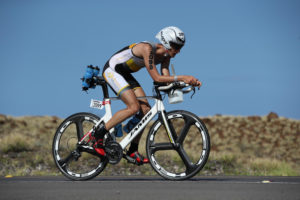 When I got to the Queen K, I was able to pick up the pace… but it was still crowded. Most of the riders were violating the 5 bike length draft zone rule. This meant that if passed a rider I also had to pass the rider in front of him because he was within the 5 bike length rule. So I had to pass groups of riders, which required me to ride at a hard effort for a long time duration. Often, it took 2- 3 minutes to make a pass around a group because the groups were so long. After I passed a group of riders I would slow down and settle into my IM effort.
When I got to the Queen K, I was able to pick up the pace… but it was still crowded. Most of the riders were violating the 5 bike length draft zone rule. This meant that if passed a rider I also had to pass the rider in front of him because he was within the 5 bike length rule. So I had to pass groups of riders, which required me to ride at a hard effort for a long time duration. Often, it took 2- 3 minutes to make a pass around a group because the groups were so long. After I passed a group of riders I would slow down and settle into my IM effort.
I didn’t want to continue doing 2 to 3 minute hard efforts because it would tire me out later on. I attempted another strategy, staying behind the group until it started to separate so I could pass one or two riders at a time. However, as I patiently waited behind the group, I would get passed by riders that I already passed, which caused some frustration.
In order to move up on the field I had to stay near my goal IM wattage, but this was hard to manage. I found myself doing 230-250 watt efforts when passing and then doing 180-210 watts when riding behind a large group. I had to be patient and wait for riders separate so I could pass them one by one. Once again I did not want to work too hard during the first few hours of the ride knowing that it was a 112 mile bike race and then a marathon run.
Between the town of Kona and the airport we had a tailwind so I was averaging between 25 to 30 mph. I was feeling good on the bike and I was on a great pace so far. When I got to Waikoloa (30 mile mark) the wind varied between a crosswind and headwind. My speeds slowed down to 20 to 25 mph. After the 30 mile mark I was able to pass more athletes since the riders were more spread out.
When I got to route 270 and started the climb to Hawi (42 mile mark) I had a tailwind. During the climb to Hawi, I took advantage of my power-to-weight ratio, passing a lot of riders and sustaining 240+ watts. However, on the downhills, I had to pedal just to keep up with the riders who carried more mass.
When I got to Hawi, it was getting really congested because of the slowdown before the hairpin turnaround. A lot of riders took advantage of the slowdown by passing a bunch of riders before the turnaround.
After the turnaround, the riders were slow to getting up to speed, so I gunned it and passed at least 30 riders. In addition, the riders were grabbing nutrition at the special needs station which is right after the turnaround. I didn’t need any food at special needs since I had enough nutrition to get me through the bike leg. At this point I was right on my nutrition plan of one bottle of Infinit per hour. I made sure that I was taking in a little water at every aid station. In addition, I was splashing water in my helmet and on my body to help stay cool.
Once I got to the long downhill descent I was no longer passing riders. Instead I was getting passed by riders every few minutes. There were a few steep section where I could get into an aero tuck position and not have to pedal. But, for the most part, I had to keep pedaling to keep pace with the riders. When I got to the bottom of the Hawi climb I was able to pass a few riders on the climb to Queen K. This was the last segment of the race where I felt good… from that point on things got ugly for me.
I had a large power fade when I got onto the Queen K. At this point I knew I had to stay mentally positive and tough it out. I had about 2 hours left to go on the bike. It was hard to stay positive when I kept getting passed by several riders. In addition, the last 30 miles of the bike had a significant headwind which added fatigue to the legs. I entered into survival mode and mentally check-out. My mindset changed from “racing to a podium finish” to “just to get to T2 whatever it takes.” I turned my focus from pace or power to spinning the legs and soaking in the environment. I started taking notice of the beautiful landscape of the lava fields and the Pacific coast. In other words today was “pain in paradise”.
Towards the end of the bike I had some cramping issues in my hamstrings. I had to stand up on the bike and stretch out to get rid of the cramps. I rarely have cramping issue so I think I was a little dehydrated and more fatigued than usual. I was happy to finish the ride in 5:14:06 and 108th in my age group.
 When I dismounted in T2 and started running my legs felt like bricks. I did not rush myself through T2, like I normally do at other triathlons. Instead I took my time as I put my run gear and sunscreen on. When I started the marathon, I realized that I didn’t have my Garmin watch on because I left it on the bike so I had no way of tracking my pace. However, this may have been a good thing because I could go by feel and not worry about my time. My mindset for the run was to soak in the atmosphere, finish, and most of all just enjoy the moment because I was in KONA!
When I dismounted in T2 and started running my legs felt like bricks. I did not rush myself through T2, like I normally do at other triathlons. Instead I took my time as I put my run gear and sunscreen on. When I started the marathon, I realized that I didn’t have my Garmin watch on because I left it on the bike so I had no way of tracking my pace. However, this may have been a good thing because I could go by feel and not worry about my time. My mindset for the run was to soak in the atmosphere, finish, and most of all just enjoy the moment because I was in KONA!
Per the Ironman tracker I was running 7:30 pace for the first few miles. Throughout the marathon I did a run-walk strategy. I walked through every aid station to hydrate and cool off. In the aid stations I put sponges and ice in my tri suit. After the aid stations I would start running again. The first 9 miles of the marathon were exciting because of the crazy and cheering spectators.
By mile 9, I had to walk up a few big hills like Paloniti. After mile 9 my pace slowed down to the mid 8 to 8:30 pace range. By this point, I was running on the Queen K highway… which had very few spectators, but plenty of volunteers at each aid station for support. After a few miles on the Queen K it felt like time was slowing down because it was taking a longer and longer time to get to each mile mark. I knew it was going to be a long day! Instead of focusing on the mile markers, I shifted my focus on just getting to the next aid station and keeping pace with the other competitors around me.
The temperature on the run was near 90 degrees, which made it uncomfortable. But the ice from the aid stations kept my body temperature under control. The hot temperatures caused my Infinit nutrition on my fuelbelt to heat up which didn’t taste great. Instead I took some clif shot blocks on the course to get in the additional calories.
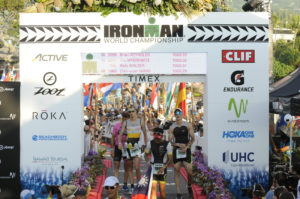 I ran the last 2 miles non-stop since it was mostly downhill. I was able to pick up the pace and find extra energy to finish strong. When I got to Ali’i drive I used every last bit of adrenaline I had to finish strong. The finish line area was pretty epic and I soaked it in. My finish time was 10:02:34 and I was 80th out of 175 athletes in the 30-34 age group. Given the mental wins and struggles of the day, I was very pleased with how I finished.
I ran the last 2 miles non-stop since it was mostly downhill. I was able to pick up the pace and find extra energy to finish strong. When I got to Ali’i drive I used every last bit of adrenaline I had to finish strong. The finish line area was pretty epic and I soaked it in. My finish time was 10:02:34 and I was 80th out of 175 athletes in the 30-34 age group. Given the mental wins and struggles of the day, I was very pleased with how I finished.
After finishing the volunteers gave me a finisher’s medal and Kukui Nut Lei. Pushing myself the last 2 miles caused me to be very nauseous so I stopped by the med tent to make sure I was ok. The medical staff took my weight and I lost 10 pounds which was 7% of my body weight. I started to feel better after resting and drinking some broth in the med tent. I’m always in rough shape after an Ironman… and today was no different. However, I was less sore since I didn’t push the marathon as hard as I’ve done in the past (aka less pounding on the feet). . did have some nasty sunburn on my back!
The next day my family and I watched the award ceremony for the age-group and professional athletes. The age-group award ceremony was really motivating to watch. The 5-top finishers in each male and female age group got awards. The ceremony inspired me to continue to improve and someday be on one of those five podium steps.
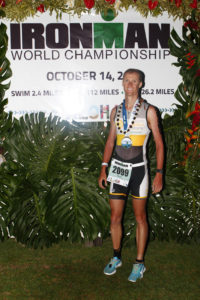 This race was a humbling experience, racing against the best athletes in the world on one of the toughest course in the world. It was a honor to say that I qualified for Ironman World Championships and that I accomplished one of my lifelong dreams. I would like to thank my dad, my aunt, and my 2nd cousin Emma that came out to support me on this trip. I also want to thank Team Athletic Mentors, the Trikat Club, and my friends for supporting me on this journey. I would like to thank my coach for his guidance and helping me reach my Kona goal.
This race was a humbling experience, racing against the best athletes in the world on one of the toughest course in the world. It was a honor to say that I qualified for Ironman World Championships and that I accomplished one of my lifelong dreams. I would like to thank my dad, my aunt, and my 2nd cousin Emma that came out to support me on this trip. I also want to thank Team Athletic Mentors, the Trikat Club, and my friends for supporting me on this journey. I would like to thank my coach for his guidance and helping me reach my Kona goal.
Thank you for reading my Kona blogs and I hope this encourages you to go after your dreams. You can accomplish anything if you surround yourself with the right people, you have a plan, you have a drive to succeed, and you have patiences. Anything is possible! Go and write your journey!
The post My Kona Journey: The Final Part appeared first on Team Athletic Mentors.
 With 25mi to go, the Cat 3 climb finally broke up the field and 4 riders pulled away (Cory, Tamatha, Brook, and Elaine). The group stayed together and descended towards the finish for a bunch sprint. With 200m to go Cory kicked and the group followed. She was able to make it count and took the red jersey. Elaine claimed 2nd and kept her hopes alive of a strong finish in the overall.
With 25mi to go, the Cat 3 climb finally broke up the field and 4 riders pulled away (Cory, Tamatha, Brook, and Elaine). The group stayed together and descended towards the finish for a bunch sprint. With 200m to go Cory kicked and the group followed. She was able to make it count and took the red jersey. Elaine claimed 2nd and kept her hopes alive of a strong finish in the overall.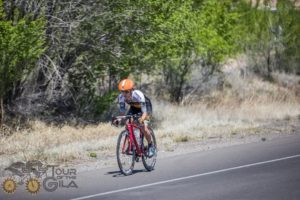

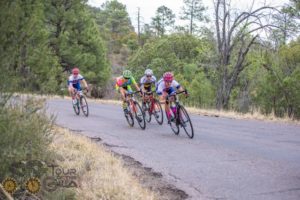
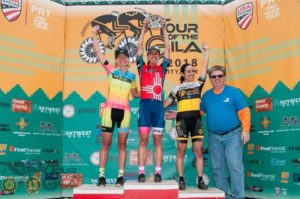




 Our Hockey Site
Our Hockey Site Team AM
Team AM


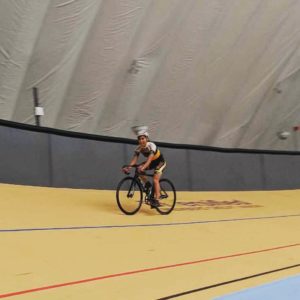
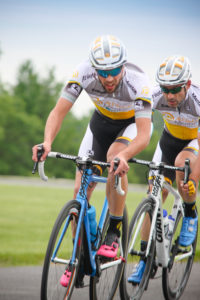
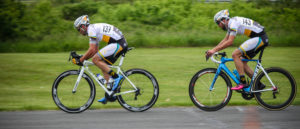
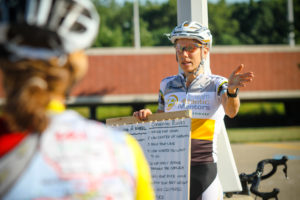
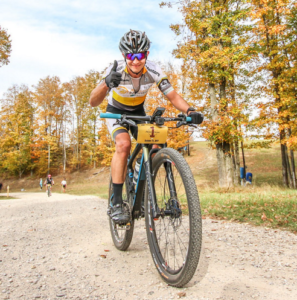
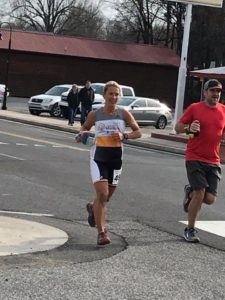
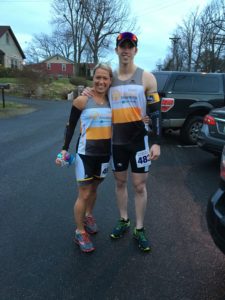
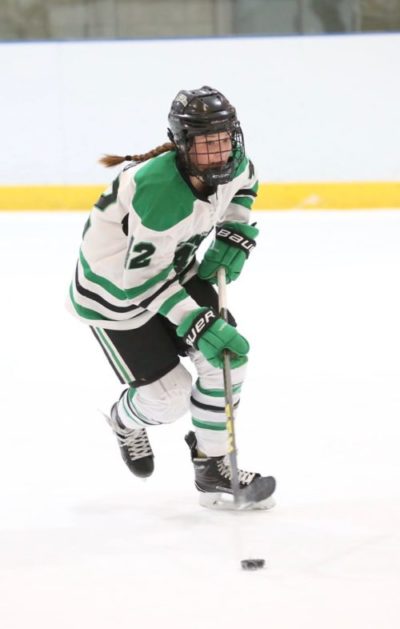 What do the Winter Olympics, the KOHA, and Athletic Mentors have in common? They’re scoring awareness for the sport of Girls & Women’s hockey.
What do the Winter Olympics, the KOHA, and Athletic Mentors have in common? They’re scoring awareness for the sport of Girls & Women’s hockey.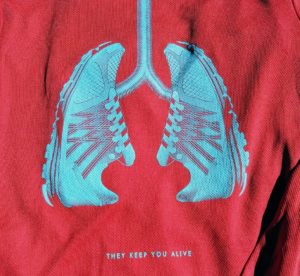
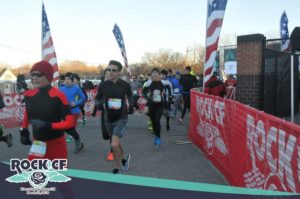
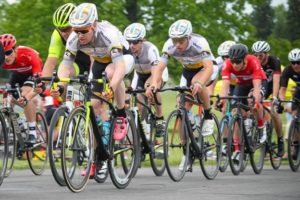





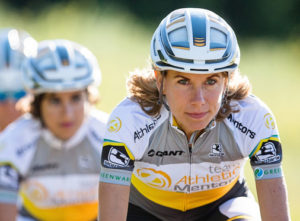 Athletic Mentors — the training and team management company responsible for elevating Michigan endurance athletes to recognition as “podium performers” — is ramping up for another strong showing for the 2018 race season.
Athletic Mentors — the training and team management company responsible for elevating Michigan endurance athletes to recognition as “podium performers” — is ramping up for another strong showing for the 2018 race season. Back for a second year in the presenter role is
Back for a second year in the presenter role is  After a season break,
After a season break,  Gauthier Family Home Care
Gauthier Family Home Care Total Plastics Inc.
Total Plastics Inc.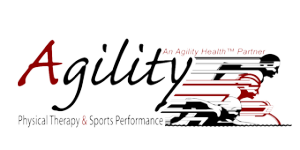 Agility Sports Medicine
Agility Sports Medicine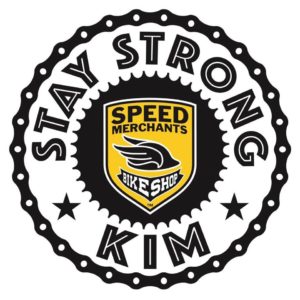 Kim Wood, owner of Speed Merchants cycling shop, was recently diagnosed with late-stage cancer. Our hearts are with him and his family during this incredibly tough time. Please join us in our support.
Kim Wood, owner of Speed Merchants cycling shop, was recently diagnosed with late-stage cancer. Our hearts are with him and his family during this incredibly tough time. Please join us in our support.